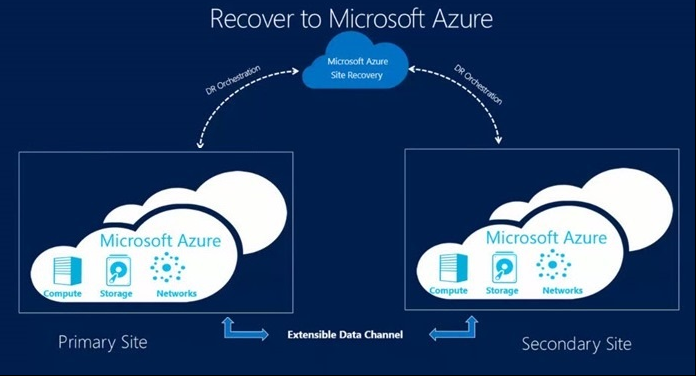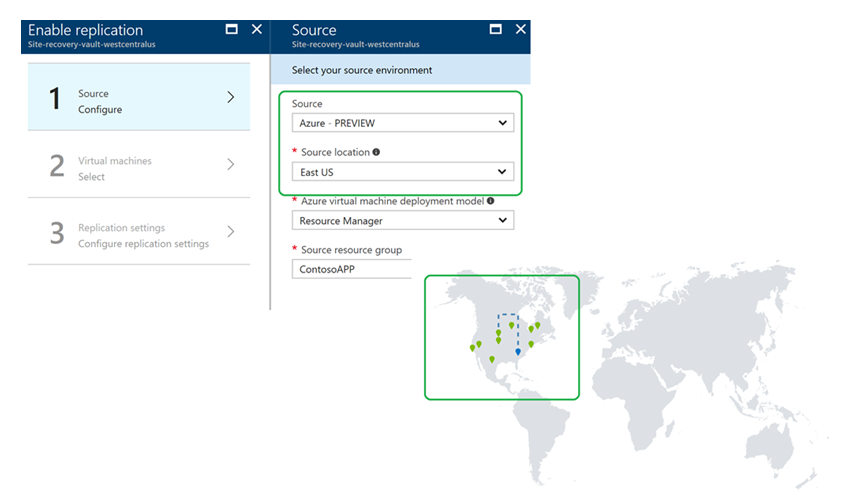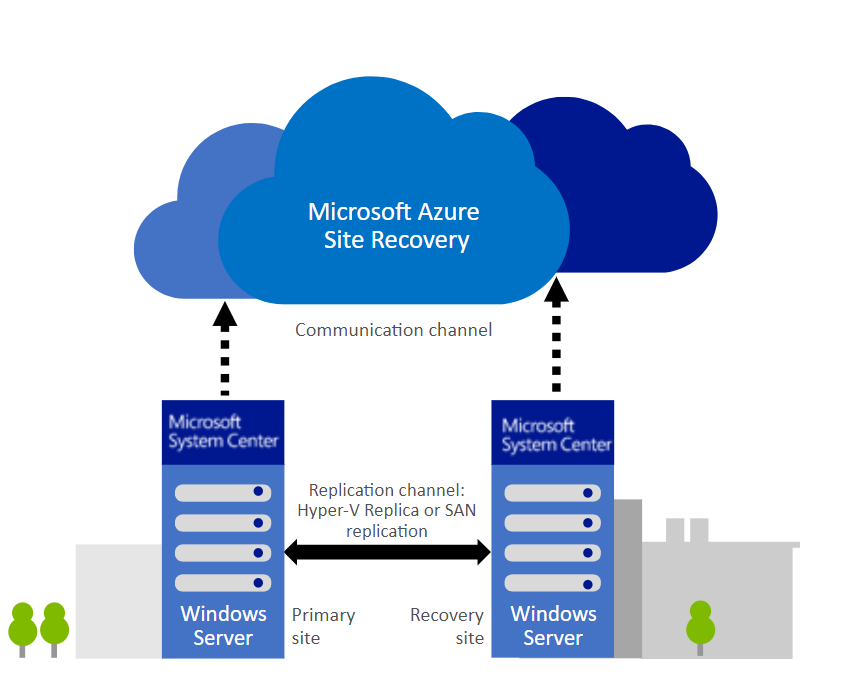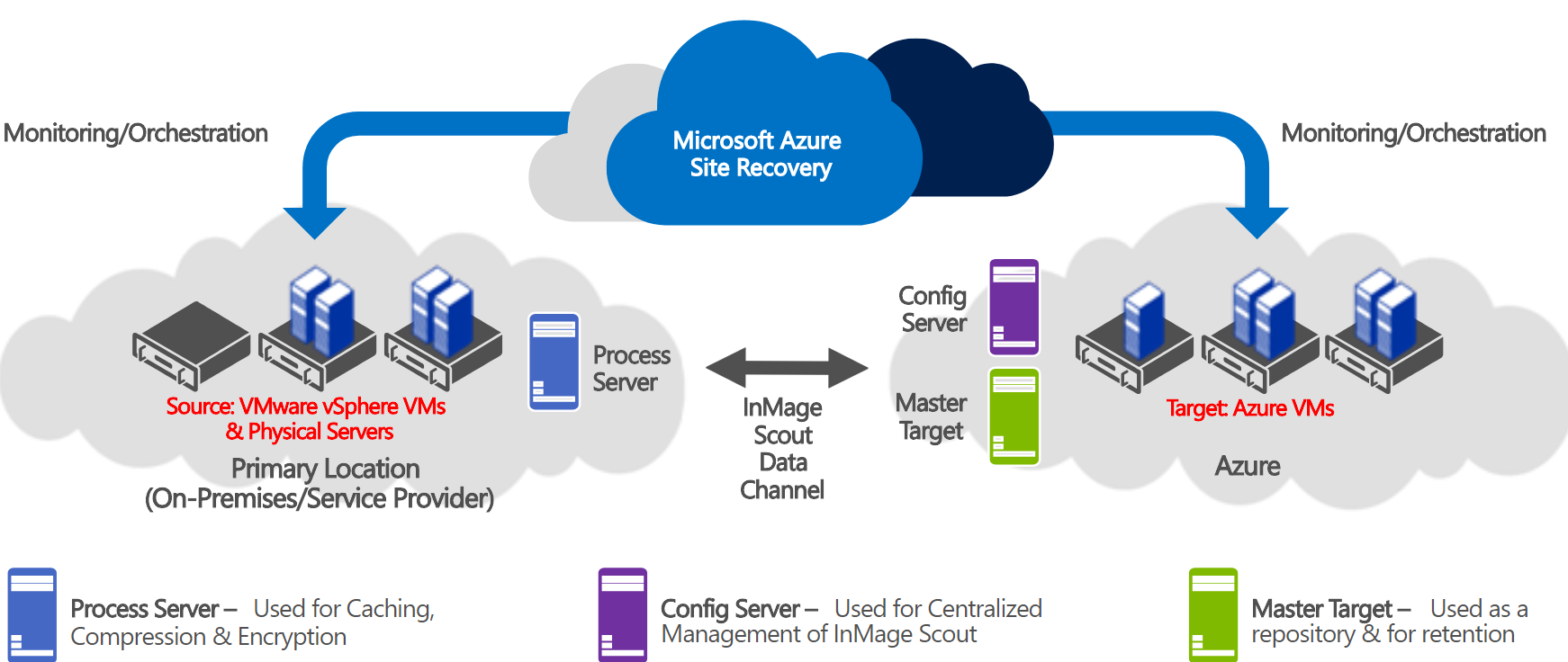For a business to thrive, the most significant factor is business continuity and fault tolerance. Businesses should be able to recover from all kinds of catastrophes while having a minimum downtime of their services due to the results of natural disasters, human-made disasters, and operational failures. For many business organizations, service downtimes directly add to monetary losses. For example, a telco company would face both short and long-term losses of millions of dollars if their services are down for a mere couple of minutes.
To overcome business downtimes, there should be a reliable and fool-proof Business Continuity and Disaster Recovery Strategy (BCDR) which offers a Disaster Recovery as a Service (DRaaS).
Azure Site Recovery (ASR) makes it possible for businesses to minimize service downtimes due to IT operational interruptions. Microsoft Azure Site Recovery orchestrates and manages disaster recovery for both physical servers and Windows, Linux, Hyper-V, and VMware virtual machines.
Azure Site Recovery provides two types of functionality;
- Replication – Replication synchronizes the contents of the operating systems and the data disks attached to the servers and virtual machines hosted on either Azure or in the on-premises environment between the primary site and the secondary site.
- Orchestration – Orchestration is responsible for seamless failover and failback between the primary and the secondary sites if a disaster affects the primary site.
Azure Site Recovery overview
Azure Site Recovery provides six primaries to be used as a backup service and Disaster Recovery as a Service (DRaaS).
• Automated Data Protection (DP) and replication of virtual machines and physical servers
• Customizable Disaster Recovery plans
• Automated failover and recovery
• Production non-disruptive recovery and failover testing
• Health monitoring of the Disaster Recovery Site (ASR)
• Multiple operating systems and third-party software support (VEEAM, ZERTO)
Azure Site Recovery business continuity and disaster recovery strategy
Azure Site Recovery offers two primary BCDR strategies;
1. Azure Site Recovery Services
Azure Site Recovery enables business continuity by taking over the task of running the business applications and workloads that happen during outages.
2. Azure Backup Service
Azure Backup Service keeps the data backed up safely in Azure to be recovered when needed.
Azure Site Recovery features
• BCDR – set up and manage failover, failback, and replication from a single interface within the Azure Portal
• Azure VM Replication – the ability to replicate an Azure hosted Virtual Machine from the primary region to a secondary region
• On-premises VM replication – the ability to replicate on-premises virtual machines and physical servers to Azure or a secondary data center
• Workload Replication – Replicate all the workloads running on Azure VMs, on-premises VMware, Hyper-V, Linux, and Windows physical servers
• Application consistency – Application consistency is maintained by using recovery points with application consistency snapshots. These snapshots capture the entire disk data, all the data that is present in the memory, and all the transactions that are in process.
These are just a few of the features among many.
Azure Site Recovery variants
Azure Site Recovery enables organizations with a different infrastructure to make use of ASR. It’s offered in three variants:
• Azure to Azure
• On-premises to Azure
• On-premises to On-premises
Azure to Azure
Microsoft Azure offers an option to replicate virtual machines from one geographical region to another. For example, Virtual machines hosted in the Canada East Azure Data center can be replicated to the Canada Central or the South Central US.

Figure 1 Source: Microsoft

Figure 2 Source: Microsoft
On-premises to Azure
ASR also lets you replicate on-premises virtual machines and physical servers to Azure. Changes made in these machines are replicated instantly to the Azure storage account. If for any instant, the business faces a service downtime, an Azure VM can be created within Azure and resume work with minimal service downtime. This is very convenient for businesses since they only pay for the storage used.
On-premises to on-premises
In this scenario, site recovery is solely responsible for managing the migration of the data among the primary and the secondary site and only acts as a communication channel between them.

Figure 3 Source: Microsoft
Why Azure Site Recovery
Other traditional disaster recovery models are expensive and time-consuming to implement, but the disaster recovery solution of Microsoft Azure Site Recovery makes it possible for businesses to unlock a variety of features that were not possible for organizations to attain at an enterprise level.
Reduced costs
The usage of Azure Site Recovery eliminates the need to maintain a secondary datacenter of a hot site, warm site, cold site, or acquiring additional physical infrastructure to be used in anticipation of a service downtime which comes with a high initial, operational, and maintaining cost. With Azure Site Recovery, there is only the need to pay for the storage used. Other operational costs of computing are applied only if there is a service outage.
Convenient replication and testing
Azure Site Recovery offers innovative disaster recovery drills that allow you to easily test the configuration and replication without affecting the production environment. This process enables businesses to test the setup quickly and have the added confidence that the failover process will work seamlessly.
Additional Azure features like runbooks can be used to automate the failover process. This automation makes the failover process instant without human intervention, so the process is fast resulting in minimum service downtimes.
Simple deployment and management
Azure Site Recovery can be easily initiated without any additional expertise. ASR is also automatically updated with new Azure features as soon as they are released. The provisioning order of the virtual machines in a failover instance when applications are running in a sequence of separate virtual machines can be pre-configured to eliminate application connectivity issues. Compliance can also be tested without impacting the live production environment or its users by running test failover scenarios.
99.9% SLA
Organizations can rely on Azure Site Recovery which ensures minimum downtime and recovery that is dependable. ASR promises 99.9% service availability and 24×7 instant support so business processes can run smoothly. As a result, the Azure Site Recovery platform is used by 80% of the Fortune 500 companies.

Figure 4 Source: Microsoft
Azure Site Recovery caveats
One major drawback of ASR is that it’s ideally suited for large organizations with cloud expertise. This is because the constant replication of data creates additional traffic on the network and requires network hardware that can handle this without compromising the local WAN. Larger organizations should also consider provisioning Azure Express if there are large amounts of data that continually synchronize with the ASR. This would eventually eliminate any network bottlenecks and will increase the security of the data transferred over the network. Additionally, if the organization has a capped limited internet connection with unreliable internet upload and download speeds, it is recommended to check out other third-party software.
